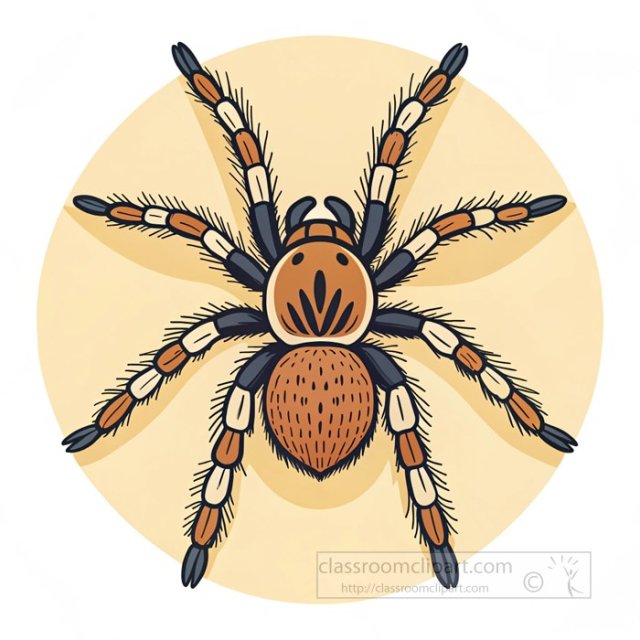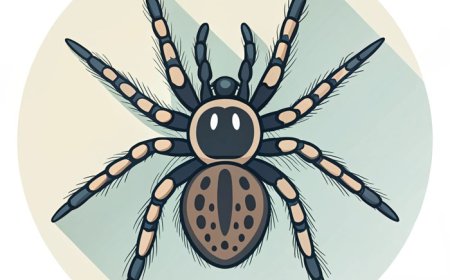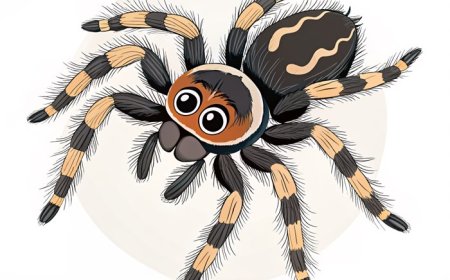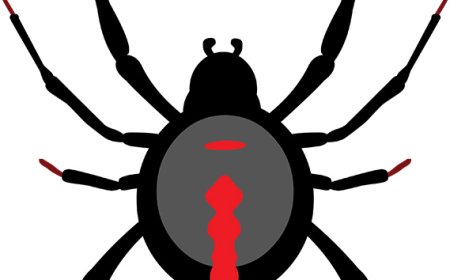Tarantulas Guide: Gentle Giants of the Spider World
Explore the fascinating lives of tarantulas—large, hairy spiders that live in burrows and play important roles in nature. Learn where they live, what they eat, and why they aren’t as scary as they seem!

🧶 Introduction
Tarantulas are some of the most famous spiders in the world. Known for their large size, hairy bodies, and slow movements, they are often seen in movies or Halloween decorations. But despite their reputation, tarantulas are not dangerous monsters—they are gentle and shy creatures that help control insect populations and rarely bother humans.
These spiders live in warm places all over the world and come in many different colors and sizes. Some are brown and furry, while others are black, orange, or even bright blue. Learning about tarantulas can help you understand why they’re important to nature—and why there’s no need to fear them.
🕷️ What Does a Tarantula Look Like?
Tarantulas are among the largest spiders in the world. Most have thick, hairy legs and a sturdy, furry body. Adult tarantulas can range in size from 2 inches to over 10 inches, including their legs. Their colors vary depending on the species, but many are brown, black, or reddish. Some tropical species have metallic blue or green markings.
They have eight legs, just like all spiders, plus two shorter leg-like parts near their mouths called pedipalps, which they use to help hold food. Their entire body is covered in fine hairs that help them sense vibrations in the ground—this is especially useful because tarantulas do not have good eyesight.
🌍 Where Do Tarantulas Live?
Tarantulas prefer warm, dry places and are found in deserts, grasslands, rainforests, and mountains. They live on almost every continent except Antarctica. In the United States, they are most commonly found in the southwestern states such as Arizona, Texas, and New Mexico. Other species live in Central and South America, Africa, Asia, and Australia.
Most tarantulas are ground dwellers that build or find burrows to live in. These are safe, dark holes in the ground where the spider can hide during the day and wait for prey at night. Some species live in trees and use silk to line their nests and climb branches.
🍽️ What Do Tarantulas Eat?
Tarantulas are carnivorous hunters. They eat insects like crickets, beetles, and grasshoppers, but larger species can also catch frogs, lizards, small birds, or even rodents. Because they don’t spin webs to trap prey, tarantulas rely on surprise attacks. They wait quietly near their burrow or in a hiding spot, then pounce on prey and use their fangs to inject venom.
Once the venom takes effect, the tarantula releases digestive juices that liquefy the inside of the prey, allowing the spider to drink it. This process may sound a bit gross, but it’s very effective—and it means tarantulas don’t need to eat every day. Some can go weeks or even months without food!
🛡️ Are Tarantulas Dangerous?
Tarantulas may look scary because of their size and fangs, but they are not aggressive toward humans. They will usually only bite if they feel threatened, and even then, their venom is mild and not harmful to most people. A tarantula bite is often compared to a bee sting—it may hurt, but it’s not life-threatening.
Instead of biting, tarantulas often use another defense: they flick tiny hairs from their abdomen using their back legs. These urticating hairs can irritate the skin or eyes of predators and give the tarantula time to escape. This clever defense works well against animals like birds or mammals that might try to eat them.
🐣 Life Cycle and Behavior
Tarantulas are solitary creatures that spend most of their time alone. Males and females come together only to mate, and afterward, the female lays hundreds of eggs in a silk egg sac. She guards the sac carefully until the spiderlings hatch, and then they go off on their own.
Tarantulas grow slowly and can live for many years. Female tarantulas often live 15 to 20 years, while males usually live only 5 to 10 years. Like other spiders, they grow by molting, which means they shed their outer skin to get bigger. During this process, they may even regrow lost legs!
🌟 Fun Facts About Tarantulas
The Goliath birdeater is the largest tarantula in the world—it’s as big as a dinner plate!
Some tarantulas can climb glass using tiny hairs on their feet.
Tarantulas are popular pets because they are quiet, clean, and don’t need much space.
Tarantulas don’t build webs to catch prey, but they use silk in their burrows and to help with molting.
In some cultures, people eat roasted tarantulas as a traditional snack.
👧 Kid-Friendly Summary
Tarantulas are big, hairy spiders that live in warm parts of the world. They eat insects and other small animals, and they usually live in burrows. Even though they look scary, they are shy and almost never bite people. Tarantulas are important hunters in their habitats and help keep insect populations under control.
📚 Vocabulary Words
Tarantula – A large, hairy spider that lives in warm climates
Pedipalp – A short leg-like part near a spider’s mouth used to handle food
Burrow – A hole in the ground used as a shelter
Venom – A poison used to paralyze prey
Urticating hairs – Itchy hairs that tarantulas flick to defend themselves
Molting – The process of shedding old skin to grow
Carnivore – An animal that eats other animals
Spiderling – A baby spider
❓ Interactive Quiz (8 Questions)
1. What kind of animal is a tarantula?
A. Insect
B. Reptile
C. Arachnid
D. Amphibian
2. Where do most tarantulas live?
A. In cold forests
B. In burrows in warm places
C. In the ocean
D. In ant hills
3. What do tarantulas eat?
A. Leave
B. Insects and small animals
C. Fruit
D. Wood
4. How do tarantulas catch their prey?
A. With webs
B. By pouncing and using venom
C. By chasing in groups
D. With a net
5. What are urticating hairs?
A. Hairs that help tarantulas walk
B. Hairs that help spiders spin silk
C. Itchy hairs used for defense
D. Hair used to catch prey
6. Do tarantulas usually hurt humans?
A. Yes, always
B. No, they are shy and rarely bite
C. Only baby tarantulas bite
D. Only if they’re wet
7. What do tarantulas do to grow?
A. Change colors
B. Eat their old skin
C. Molt
D. Sleep a lot
8. What is the world’s largest tarantula?
A. Wolf spider
B. Black widow
C. Orb-weaver
D. Goliath birdeater




















































